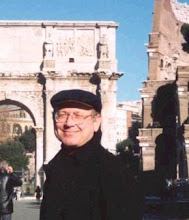“I am afraid that the ordinary citizen will not like to be told that banks can and do create money . . .”
Reginald McKenna, past Chairman of the Board, Midlands Bank of England
Most Americans do not understand our current financial crises because they do not understand how money is created, who creates it, and how an economy can be deflated by “fear itself.”
The simple terrifying truth is that most of our money is created by private banks and if these private banks succumb to an epidemic of fear and hysteria (perhaps provoked by an irresponsible mass media) the production of money will halt, employers will run out of cash, and employees will become unemployed.
How do banks create money and, if so, why are they not treated as common counterfeiters? Banks create money by simply providing credit to their customers. Each time a loan is issued by a bank, the economy, to some small degree, is inflated. An isolated economy that was originally made up of $1,000 in gold coins has its money supply increased to $1,200 by the simple issue of $200 credit to a member of the economy who doesn’t have the cash now but who the creditor trusts “is good for it in the future.”
“When you take a loan, money is created. When you pay it back, money is destroyed.”
Advocates of Liberty, http://www.iowaliberty.org/node/61
To get a clearer idea of how money is produced by banks let us take a simplified model of an isolated island economy with a total money supply of $1,000, all belonging to only one of its citizens. To keep the model simple and easy to understand, we begin by assuming that there is no trade with foreign lands, the government does not regulated the economy, and that the members of the economy do all of their trading with credit cards and therefore do not carry cash.
The economy gets rolling when the single cash-holding member of the economy deposits his $1,000 in the island’s only bank. The bank’s books immediately reflect that it has deposits of $1,000 and the bank begins looking for a way of making a profit off that sum by loaning it out for interest. It finds a second member of the economy who has a business idea and is a good risk. Since it has deposits of $1,000, the bank believes that it has $1,000 to loan out and issues credit of $1,000 to the fledgling entrepreneur.
Since the borrower uses his credit card for all of his everyday transactions, he has no need for carrying cash around and therefore deposits the $1,000 into his account at the bank. This new deposit leaves the bank with deposits of $2,000, the original $1,000 deposited by the original “old-money” depositor and the second $1,000 now deposited by the ”nouveau riche” borrower. The total deposits remain at $2,000 as the borrower buys equipment and hires fellow islanders because each person he does business with uses his credit card for spending and deposits his money into the island’s only bank.
The president of the bank, who is always looking for new ways to earn interest from borrowers, realizes he now has deposits of $2,000 but only has loans outstanding of $1,000. With this in mind, he loans out the second $1,000. This loaned money is immediately deposited back into the bank, bringing the total amount of money deposited in the bank to $3,000. The bank, simply by issuing credit, has inflated the islands economy three-fold and is now looking for ways to further inflate the economy by loaning out its latest deposits. Left unchecked, this inflationary process could continue into infinity.
In short, most money is created by the trust of creditors and the confidence they have that their credit will be repaid. While the island’s mint might affect the economy by deficit spending and speeding up the printing presses, the vast bulk of the economy’s money supply is nothing more than credit and the optimism of its bankers.
While the money supply can be inflated infinitely on our hypothetical island, the issuing of credit money in the real world has its limits as the amount of deposited money available for loans is reduced by several factors:
- Deposits are reduced by actual cash that members of economy choose to carry in their pockets or hide under their mattresses (man does not live by credit cards alone);
- The government, which feels obligated to keep the economy stable, requires that banks keep a certain amount of their total deposits in reserve and unavailable for loans (a “fractional reserve”);
- The bankers themselves limit their loans to those that are safe and do not involve risk.
It is the third factor, however, the confidence that bankers have in their borrowers, which can create inflation in times of “irrational exuberance” or deflation in times of rampant pessimism such as what we are experiencing at the current time. Regardless of the efforts of the government and the Federal Reserve, if bankers are afraid to issue loans, bank-produced money will disappear, employers will suffer cash flow problems, and employees will be handed their pink slips.
“One thing to realize about our fractional reserve banking system is that, like a child's game of musical chairs, as long as the music is playing, there are no losers.”
Andrew Gause, Monetary Historian
Whether it is based upon gold, the promises of government backing, or the loans issued by creditors, money is essentially a product of faith. When that faith is strengthened by optimism, an economy inflates until it reaches a ceiling set by the government. When that faith is weakened by the fear and pessimism of creditors, an economy will experience a “credit crisis” that no government can control through regulation or stimulation.




No comments:
Post a Comment